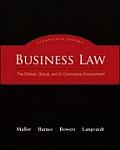Statistics for Management and Economics Keller 10th Edition Solutions Manual
$35.00 Original price was: $35.00.$26.50Current price is: $26.50.
Statistics for Management and Economics Keller 10th Edition Solutions Manual
Instant download Statistics for Management and Economics Keller 10th Edition Solutions Manual pdf docx epub after payment.

Product details:
- ISBN-10 : 1285425456
- ISBN-13 : 978-1285425450
- Author: Gerald Keller
STATISTICS FOR MANAGEMENT AND ECONOMICS, Tenth Edition, emphasizes applications over calculation. It illustrates how vital statistical methods and tools are for today’s managers–and teaches you how to apply them to real business problems. Using a proven three-step “ICI” approach to problem solving, the text teaches you how to IDENTIFY the correct statistical technique by focusing on the problem objective and data type; how to COMPUTE the statistics doing them by hand, using Excel, or using MINITAB; and how to INTERPRET results in the context of the problem. This unique approach enhances your comprehension and practical skills. The text’s vast assortment of data-driven examples, exercises, and cases covers the various functional areas of business, demonstrating the statistical applications that marketing managers, financial analysts, accountants, economists, and others use. These comprehensive applications give you hands-on practice, while solid pedagogical elements make the material more accessible and easy to apply to your world. Completely up-to-date, the tenth edition offers comprehensive coverage, current examples, and Excel 2013 and MINITAB 16 content.
Table Of Contents:
- Ch 1: What Is Statistics?
- Ch 1: Introduction
- 1-1: Key Statistical Concepts
- 1-2: Statistical Applications in Business
- 1-3: Large Real Data Sets
- 1-4: Statistics and the Computer
- Ch 1: Chapter Summary
- Ch 1: Chapter Exercises
- Appendix 1: Instructions for Keller’s Website
- Ch 2: Graphical Descriptive Techniques I
- Ch 2: Introduction
- 2-1: Types of Data and Information
- 2-2: Describing a Set of Nominal Data
- 2-3: Describing the Relationship between Two Nominal Variables and Comparing Two or More Nominal Dat
- Ch 2: Chapter Summary
- Ch 2: Chapter Exercises
- Ch 3: Graphical Descriptive Techniques II
- Ch 3: Introduction
- 3-1: Graphical Techniques to Describe a Set of Interval Data
- 3-2: Describing Time-Series Data
- 3-3: Describing the Relationship between Two Interval Variables
- 3-4: Art and Science of Graphical Presentations
- Ch 3: Chapter Summary
- Ch 3: Chapter Exercises
- Ch 4: Numerical Descriptive Techniques
- Ch 4: Introduction
- Sample Statistic or Population Parameter
- 4-1: Measures of Central Location
- 4-2: Measures of Variability
- 4-3: Measures of Relative Standing and Box Plots
- 4-4: Measures of Linear Relationship
- 4-5: (Optional) Applications in Professional Sports: Baseball
- 4-6: (Optional) Applications in Finance: Market Model
- 4-7: Comparing Graphical and Numerical Techniques
- 4-8: General Guidelines for Exploring Data
- Ch 4: Chapter Summary
- Ch 4: Chapter Exercises
- Appendix 4: Review of Descriptive Techniques
- Ch 5: Data Collection and Sampling
- Ch 5: Introduction
- 5-1: Methods of Collecting Data
- 5-2: Sampling
- 5-3: Sampling Plans
- 5-4: Sampling and Nonsampling Errors
- Ch 5: Chapter Summary
- Ch 6: Probability
- Ch 6: Introduction
- 6-1: Assigning Probability to Events
- 6-2: Joint, Marginal, and Conditional Probability
- 6-3: Probability Rules and Trees
- 6-4: Bayes’s Law
- 6-5: Identifying the Correct Method
- Ch 6: Chapter Summary
- Ch 6: Chapter Exercises
- Ch 7: Random Variables and Discrete Probability Distributions
- Ch 7: Introduction
- 7-1: Random Variables and Probability Distributions
- 7-2: Bivariate Distributions
- 7-3: (Optional) Applications in Finance: Portfolio Diversification and Asset Allocation
- 7-4: Binomial Distribution
- 7-5: Poisson Distribution
- Ch 7: Chapter Summary
- Ch 7: Chapter Exercises
- Ch 8: Continuous Probability Distributions
- Ch 8: Introduction
- 8-1: Probability Density Functions
- 8-2: Normal Distribution
- 8-3: (Optional) Exponential Distribution
- 8-4: Other Continuous Distributions
- Ch 8: Chapter Summary
- Ch 9: Sampling Distributions
- Ch 9: Introduction
- 9-1: Sampling Distribution of the Mean
- 9-2: Sampling Distribution of a Proportion
- 9-3: Sampling Distribution of the Difference between Two Means
- 9-4: From Here to Inference
- Ch 9: Chapter Summary
- Ch 10: Introduction to Estimation
- Ch 10: Introduction
- 10-1: Concepts of Estimation
- 10-2: Estimating the Population Mean When the Population Standard Deviation Is Known
- 10-3: Selecting the Sample Size
- Ch 10: Chapter Summary
- Ch 11: Introduction to Hypothesis Testing
- Ch 11: Introduction
- 11-1: Concepts of Hypothesis Testing
- 11-2: Testing the Population Mean When the Population Standard Deviation Is Known
- 11-3: Calculating the Probability of a Type II Error
- 11-4: The Road Ahead
- Ch 11: Chapter Summary
- Ch 12: Inference about a Population
- Ch 12: Introduction
- 12-1: Inference about a Population Mean When the Standard Deviation Is Unknown
- 12-2: Inference about a Population Variance
- 12-3: Inference about a Population Proportion
- 12-4: (Optional) Applications in Marketing: Market Segmentation
- Ch 12: Chapter Summary
- Ch 12: Chapter Exercises
- Ch 13: Inference about Comparing Two Populations
- Ch 13: Introduction
- 13-1: Inference about the Difference between Two Means: Independent Samples
- 13-2: Observational and Experimental Data
- 13-3: Inference about the Difference between Two Means: Matched Pairs Experiment
- 13-4: Inference about the Ratio of Two Variances
- 13-5: Inference about the Difference between Two Population Proportions
- Ch 13: Chapter Summary
- Ch 13: Chapter Exercises
- Appendix 13: Review of Chapters 12 and 13
- Ch 14: Analysis of Variance
- Ch 14: Introduction
- 14-1: One-Way Analysis of Variance
- 14-2: Multiple Comparisons
- 14-3: Analysis of Variance Experimental Designs
- 14-4: Randomized Block (Two-Way) Analysis of Variance
- 14-5: Two-Factor Analysis of Variance
- 14-6: (Optional) Applications in Operations Management: Finding and Reducing Variation
- Ch 14: Chapter Summary
- Ch 14: Chapter Exercises
- Appendix 14: Review of Chapters 12 to 14
- Ch 15: Chi-Squared Tests
- Ch 15: Introduction
- 15-1: Chi-Squared Goodness-of-Fit Test
- 15-2: Chi-Squared Test of a Contingency Table
- 15-3: Summary of Tests on Nominal Data
- 15-4: (Optional) Chi-Squared Test for Normality
- Ch 15: Chapter Summary
- Ch 15: Chapter Exercises
- Appendix 15: Review of Chapters 12 to 15
- Ch 16: Simple Linear Regression and Correlation
- Ch 16: Introduction
- 16-1: Model
- 16-2: Estimating the Coefficients
- 16-3: Error Variable: Required Conditions
- 16-4: Assessing the Model
- 16-5: Using the Regression Equation
- 16-6: Regression Diagnostics—I
- Ch 16: Chapter Summary
- Ch 16: Chapter Exercises
- Appendix 16: Review of Chapters 12 to 16
- Ch 17: Multiple Regression
- Ch 17: Introduction
- 17-1: Model and Required Conditions
- 17-2: Estimating the Coefficients and Assessing the Model
- 17-3: Regression Diagnostics—II
- 17-4: Regression Diagnostics—III (Time Series)
- Ch 17: Chapter Summary
- Ch 17: Chapter Exercises
- Appendix 17: Review of Chapters 12 to 17
- Ch 18: Model Building
- Ch 18: Introduction
- 18-1: Polynomial Models
- 18-2: Nominal Independent Variables
- 18-3: (Optional) Applications in Human Resources Management: Pay Equity
- 18-4: (Optional) Stepwise Regression
- 18-5: Model Building
- Ch 18: Chapter Summary
- Ch 18: Chapter Exercises
- Ch 19: Nonparametric Statistics
- Ch 19: Introduction
- 19-1: Wilcoxon Rank Sum Test
- 19-2: Sign Test and Wilcoxon Signed Rank Sum Test
- 19-3: Kruskal–Wallis Test and Friedman Test
- 19-4: Spearman Rank Correlation Coefficient
- Ch 19: Chapter Summary
- Ch 19: Chapter Exercises
- Appendix 19: Review of Statistical Inference (Chapters 12 to 19)
- Ch 20: Time-Series Analysis and Forecasting
- Ch 20: Introduction
- 20-1: Time-Series Components
- 20-2: Smoothing Techniques
- 20-3: Trend and Seasonal Effects
- 20-4: Introduction to Forecasting
- 20-5: Forecasting Models
- Ch 20: Chapter Summary
- Ch 21: Statistical Process Control
- Ch 21: Introduction
- 21-1: Process Variation
- 21-2: Control Charts
- 21-3: Control Charts for Variables: X and S Charts
- 21-4: Control Charts for Attributes: P Chart
- Ch 21: Chapter Summary
- Ch 22: Decision Analysis
- Ch 22: Introduction
- 22-1: Decision Problem
- 22-2: Acquiring, Using, and Evaluating Additional Information
People also search:
Statistics for Management and Economics
Statistics for Management and Economics Keller
Statistics for Management and Economics Keller 10th
Statistics for Management and Economics Keller 10th Solutions Manual
Statistics for Management and Economics Keller 10th Edition Solutions Manual
Related products
Solution Manual
Understanding Business Nickels 10th Edition Solutions Manual
Solution Manual
Solution Manual
Auditing A Risk Based-Approach to Conducting a Quality Audit Johnstone 10th Edition Solutions Manual
Solution Manual
Solution Manual
Management Information Systems Managing the Digital Firm Laudon 14th Edition Solutions Manual
Solution Manual
Solution Manual











